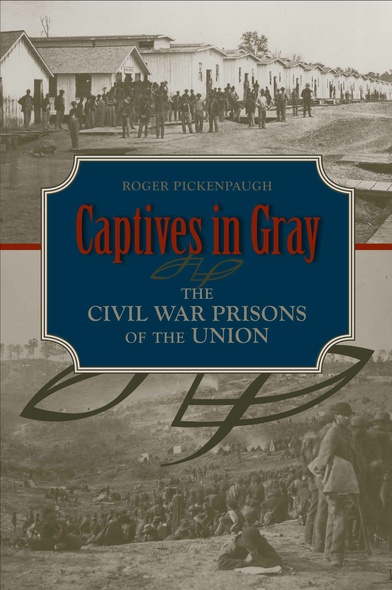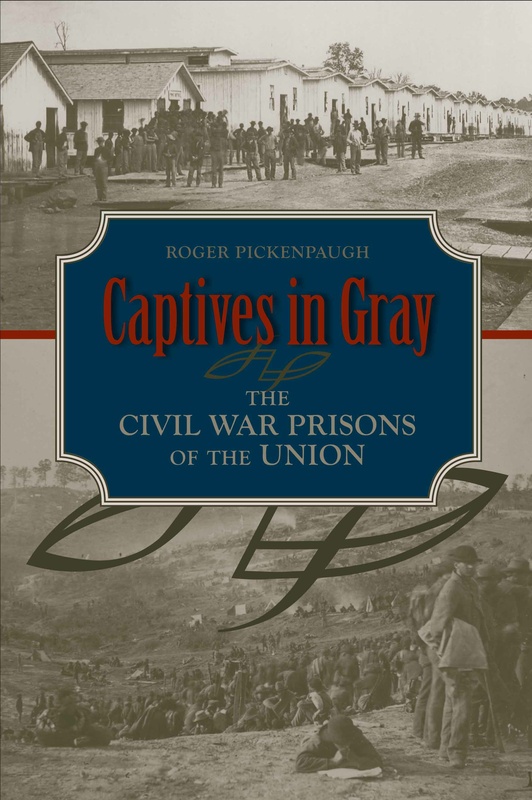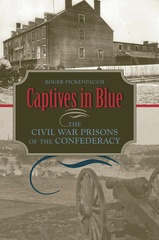
400 pages, 6 1/8 x 9 1/4
22 B&W illustrations
Hardcover
Release Date:24 May 2009
ISBN:9780817316525
Captives in Gray
The Civil War Prisons of the Union
University of Alabama Press
Contains contemporary reports from prisoners and witnesses humanize the grim realities of the POW camps
Perhaps no topic is more heated, and the sources more tendentious, than that of Civil War prisons and the treatment of prisoners of war (POWs). Partisans of each side, then and now, have vilified the other for maltreatment of their POWs, while seeking to excuse their own distressing record of prisoner of war camp mismanagement, brutality, and incompetence. It is only recently that historians have turned their attention to this contentious topic in an attempt to sort the wheat of truth from the chaff of partisan rancor.
Roger Pickenpaugh has previously studied a Union prison camp in careful detail (Camp Chase) and now turns his attention to the Union record in its entirety, to investigate variations between camps and overall prison policy and to determine as nearly as possible what actually happened in the admittedly over-crowded, under-supplied, and poorly-administered camps. He also attempts to determine what conditions resulted from conscious government policy or were the product of local officials and situations.
A companion to Pickenpaugh's Captives in Blue.
Perhaps no topic is more heated, and the sources more tendentious, than that of Civil War prisons and the treatment of prisoners of war (POWs). Partisans of each side, then and now, have vilified the other for maltreatment of their POWs, while seeking to excuse their own distressing record of prisoner of war camp mismanagement, brutality, and incompetence. It is only recently that historians have turned their attention to this contentious topic in an attempt to sort the wheat of truth from the chaff of partisan rancor.
Roger Pickenpaugh has previously studied a Union prison camp in careful detail (Camp Chase) and now turns his attention to the Union record in its entirety, to investigate variations between camps and overall prison policy and to determine as nearly as possible what actually happened in the admittedly over-crowded, under-supplied, and poorly-administered camps. He also attempts to determine what conditions resulted from conscious government policy or were the product of local officials and situations.
A companion to Pickenpaugh's Captives in Blue.
'Use this book along with James M. Gillispie's Andersonvilles of the North (CH, Aug'09, 46-6993) for balanced analysis of Confederate prisoners of war in federal hands during the Civil War. That war produced a seminal guide for proper treatment of POWs in the form of US Army General Orders No. 100 (24 April 1863), called the 'Lieber Code.' Bickering about application of these rules has obscured historical understanding of POW life in Union hands. Pickenpaugh shows that both sides lacked suitable personnel, food, and shelter for large catches of POWs produced by battles of unforeseen magnitude. Breakdown of parole and exchange of captives meant that thousands were held for months and years. Union commissary general of prisoners Colonel William Hoffman was an effective administrator known for humane interest in POW welfare limited by his tight control of funds. Camps formed little communities struggling against boredom with handicrafts, hobbies, sports, gambling, escape attempts, canteens, music, and sometimes hard liquor. Hospitals of mixed effectiveness were unable to reduce a 12 percent mortality rate caused in part by unsanitary conditions in camps. Diaries of lesser-rank soldiers reflect common life in POW camps. Summing Up: Recommended. All levels/libraries.'
—CHOICE
'Roger Pickenpaugh has provided us with a reliable work and I highly recommend Captives in Gray to any student of the Civil War, whether professional or lay person. This is a well-written, deeply moving story and I believe will become the standard for the subject.'
—Blue Gray Magazine
An ambitious examination of almost all Union military prisons, [which] . . . addresses a specific historical category that has, to my knowledge, not yet been treated.’
—William Marvel, author of Lee’s Last Retreat: The Flight to Appomattox and Andersonville: The Last Depot
This is a vivid description of conditions and events rarely described: the imprisonment of captured Confederate soldiers during the Civil War. Its many parallels to circumstances in Andersonville are especially intriguing.’
—Jimmy Carter, 39th President of the United States
Roger Pickenpaugh is the author of a dozen works of history, including Rescue by Rail: Troop Transfer and the Civil War in the West, 1863 and Camp Chase and the Evolution of Union Prison Policy.






